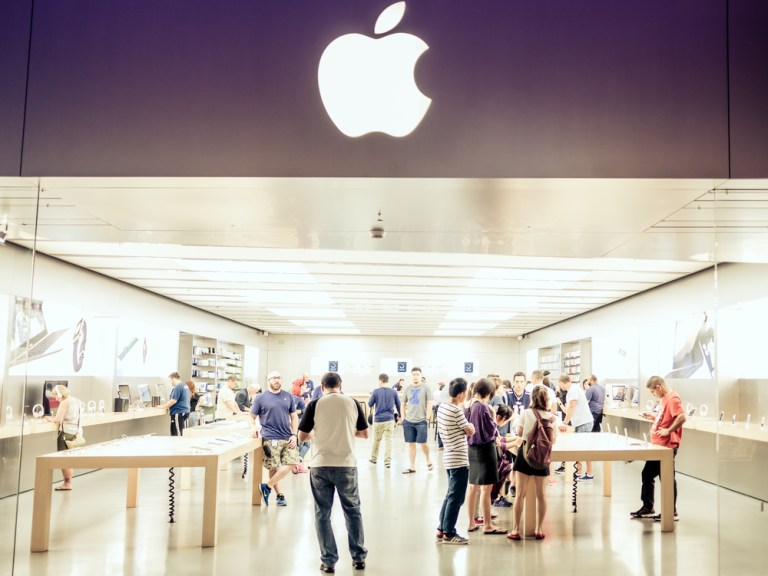
Apple had plenty of bright spots to report during its Q4 earnings call. Revenue hit a record $62.9 billion with a 20 percent year-on-year increase. Profit was up 32 percent to $14.2 billion and earnings grew 42 percent year on year, beating Wall Street’s estimate. Apple Services — home to the App Store, Apple Pay and Apple Music — nearly cracked the $10 billion in revenue mark with growth of 17 percent.
And yet investors weren’t pleased. Holiday quarter forecasts hit analyst estimates, but just barely at the upper end. Apple forecast sales for final quarter of the calendar year — typically its main event unit sales-wise — would bring in between $89-$93 billion, raising the possibility that it could miss Wall Street’s estimated $93 billion forecast by as much as $4 billion.
iPhone revenue increased 29 percent year on year, boosted by the end of the quarter release of Apple’s top of-the-line iPhone XS and XS Max products — but not because Apple is selling more iPhones. Last quarter Apple shipped 46.9 million units (missing analyst expectations of 47.9 million units), flat growth compared to last year’s sales. The iPhone story now seems to be fewer, more expensive iPhones.
The combination of weaker-than-expected holiday predictions and flat iPhone sales hit Apple’s stock price in after hours trading, where it dropped 4 percent as the news hit the wires. Stock prices took another tumble when Apple CEO Tim Cook announced during the earnings call that Apple will no longer break out the individual unit sales of its major devices (i.e. the iPhone) going forward.
That news pushed Apple’s stock price down a full 7 percent.
Citigroup analyst Jim Suva expressed the fear that “this now means that the iPhone units are going to start going negative year-over-year growth because it’s easy to talk about great things and not show the details of things that aren’t so great.”
During the call with investors, many of whom of had questions about the change in reporting, Apple CFO Luca Maestri said repeatedly that given Apple’s powerful revenue performance in recent years, the number of phones sold in any given 90 day period is “not necessarily representative of the underlying strength of our business.”
“Furthermore, our unit of sale is less relevant for us today than it was in the past, given the breadth of our portfolio and the wider sales price dispersion within any given product line,” he noted.
Apple had a lot to say about that breadth of portfolio and wider product line.
Services revenue continued to surge — up 17 percent from the previous year to $9.98 billion. That is somewhat slower than the last two quarters when Apple reported 30 percent growth, though Cook noted that excluding the the impact of an accounting change a year ago, that growth rate would have been 27 percent, a bit more in line with previous results. Subscription services, Cook noted, were a particular highlight, with paid subscriptions reaching “330 million within our ecosystem,” according to Cook.
The starring player in Apple Services’ part of the presentation this year was Apple Pay. Cook noted of Apple Pay’s “exceptional” performance that the service had seen transaction volume triple year on year — and the fact that 71 of the top 100 merchants and 60 percent of all U.S. retail locations support Apple Pay, now including Neiman Marcus and Costco.
Cook also took the opportunity to note that Apple “continues to invest in our strategy to replace the wallet” with things like its recent launch of student ID passes at several major U.S. universities. He also noted Apple Pay Cash is “the highest-rated mobile peer-to-peer service by Consumer Reports, based on exceptional payment authentication and data privacy.”
And while that is perhaps a bold claim on its own, it wasn’t the boldest claim during the presentation. That came when Cook noted the following:
“[Apple Pay is] by far the number one mobile contactless payment service worldwide. Transaction volume tripled year over year. And to put that into perspective, Apple Pay generated significantly more transactions than even PayPal Mobile with over 4 times the growth rate,” referring solely to the use of the digital wallet at the physical point of sale which, overall remains anemic.
Also singled out in Q4 was Apple’s line of wearables, which includes the Apple Watch, Beats Headphones and Apple’s AirPods. On the whole wearables saw revenue growth of 50 percent, and Cook noted it was a record quarter. Apple Watch was the star player in the wearables presentation, with Cook calling out its industry-high satisfaction levels and increasing roll as “an essential part of people’s lives.”